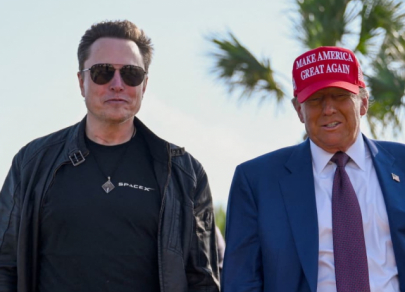
Five key tourism trends for 2025
The coming year promises unforgettable experiences for travelers, both on familiar routes and entirely new ones. Bon voyage! Analysts predict several important tourism trends in 2025 that are worth noting.




The mechanical skeleton - the exoskeleton - is given the role of not only supporting the human body, but also to exceede its the physical capabilities. Thanks to this device, a person can make the impossible possible and the difficult easy: to lift heavy weights and transfer them to a certain distance, to jump over the head in the direct meaning of this word. The exoskeleton helps people with disabilities, they are used in medicine, logistics, construction, scientific and industrial work as well as in the space and military sphere.

The first true exoskeleton in the sense of being a mobile machine integrated with human movements was co-developed by General Electric and the United States military in the 1960s. The suit was named Hardiman. Thanks to Hardiman it became possible to lift huge cargo, but, since it weighed 680 kg, this costume had been abandoned. However, the idea was not rejected by writers and filmmakers, having created many films known to the general public: "Aliens", "Iron Man", "Avatar", "District 9", "Elysium", "Edge of Tomorrow " and others. The authors of computer games also have not neglected this idea. Suffice it to recall the backpack frames from "Halo" and the suit of the protagonist from "Crysis". One way or another, the technology of exoskeletons is used in at least two dozen video games.

Referring to medicine, it should be said about Miomir Vukobratovic, who in 60-70-es of the XX century designed a walking frame for patients with paralysis of the lower limbs. His developments are currently being applied in Russia (the ExoAtlet model) and in other countries. For people who have lost mobility, a "smart" prosthesis weighing 23.3 kg and operated by Windows allows a person to sit, stand and walk. The HAL from Japanese manufacturers of exoskeletons deserves separate attention. This model is fully exploited by trial participants from 130 medical institutes. HAL-3 is focused on restoring the mobility of the lower limbs, and HAL-5 assists in the development of arms and torso.

The military application of exoskeletons has become quickly apparent. US corporation Raytheon has developed the XOS 2 for combat soldiers in the field, while Lockheed Martin has the Hulc, a hydraulic exoskeleton that provides soldiers with the ability to carry loads of about 90kg.

Summing up everything, it is necessary to answer the main question: do we need exoskeletons in our future? The answer is yes. Exoskeletons, literally descended from the pages of fantastic novels, have successfully entered our life. However, for the time we just can observe prototypes in action, but they are being widely used and in the coming years will serve for the Armed Forces and medical enterprises. Of course, the price even for the simplest models bites (tens of thousands of dollars, and it is not a joke!), but the beginning has already been made.

The coming year promises unforgettable experiences for travelers, both on familiar routes and entirely new ones. Bon voyage! Analysts predict several important tourism trends in 2025 that are worth noting.

For nearly a century, the US-based weekly periodical Time has closed out the year by selecting the person who has had the most significant impact on the global stage—not necessarily a positive one. This year, the magazine's cover features Donald Trump, who recently won the US presidential election. Let's find out who else was honored by Time and in which nimonations.

Following his election victory, Donald Trump, a billionaire himself, once again decided to include prominent magnates in his administration, as he did during his first presidential term. As a result, Trump's current cabinet features seven billionaires, making it one of the wealthiest in US history. Let's find out who these billionaires are and the roles they have been assigned.